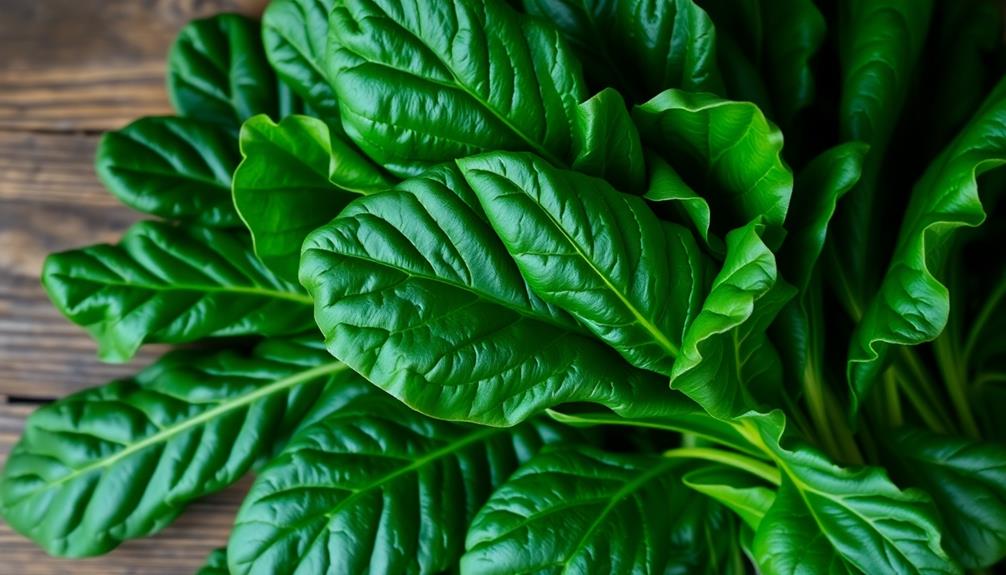Gomen, or collard greens, is a beloved vegetable with ancient roots in Greece and Rome. Enslaved Africans later introduced it to the Americas, where it became a staple in Southern cuisine, often cooked with smoked meats or served with cornbread. Valued for its hardiness and nutritious leaves, gomen symbolizes the resilience and community of African American culinary traditions. To prepare, you'll simmer the greens with onions, garlic, and broth until tender, seasoning with aromatic spices like cumin and berbere. The result is a velvety, flavorful side dish that pairs perfectly with a variety of main courses. Keep reading to discover more about gomen's rich history and versatile cooking methods.
Key Takeaways
- Gomen, or collard greens, have ancient origins tracing back to Greece and Rome, and became a staple in African American cuisine.
- Gomen is a nutrient-rich vegetable dish, traditionally simmered with onions, garlic, and broth for a tender, flavorful side dish.
- The cooking method for gomen emphasizes low and slow preparation to achieve rich flavors, with key ingredients including collard greens, onions, garlic, broth, and spices.
- Proper preparation of gomen involves thoroughly rinsing, chopping, and seasoning the collard greens before simmering them for 45 minutes to 1 hour.
- Gomen is a versatile and forgiving dish that can be customized with various seasonings and cooking methods, making it a valuable addition to meal planning.
History
The origins of gomen, or collard greens, can be traced back to ancient Greece and Rome, where they were cultivated and consumed as a nutritious leafy green.
Over time, the cultivation of collard greens spread to Africa and was later introduced to the Americas by enslaved Africans.
In the United States, collard greens became a staple in Southern cuisine, often cooked with smoked meats or served with cornbread.
The hardy leaves of the collard plant were a reliable source of sustenance during difficult times, making it a beloved comfort food in many households.
Today, collard greens remain an integral part of African American culinary traditions, symbolizing resilience, community, and the enduring spirit of the people who've cherished this humble yet nourishing vegetable for generations.
Recipe
Gomen, or collard greens, is a staple dish in many African and African-American cuisines. This leafy green vegetable is packed with nutrients and provides a delicious, healthy addition to any meal.
Traditionally, gomen is simmered with onions, garlic, and a flavorful broth, resulting in a tender, savory side dish. The key to preparing this dish is to allow the greens to cook low and slow, ensuring they develop a rich, velvety texture.
Ingredients:
- 1 lb collard greens, stems removed and leaves chopped
- 1 onion, diced
- 3 cloves garlic, minced
- 2 cups vegetable or chicken broth
- 2 tablespoons olive oil
- 1 teaspoon salt
- 1/4 teaspoon black pepper
In a large pot, heat the olive oil over medium heat. Add the onions and garlic, and sauté until translucent, about 5 minutes.
Add the chopped collard greens and stir to coat with the oil. Pour in the broth, salt, and pepper. Bring the mixture to a boil, then reduce the heat to low, cover, and simmer for 45-60 minutes, or until the greens are very tender.
When cooking gomen, be patient and allow the greens to cook low and slow. This will help break down the tough, fibrous leaves and infuse the dish with deep, savory flavors.
For best results, adjust the seasoning to your taste and serve the gomen warm, alongside your favorite main dishes.
Cooking Steps
First, rinse the collard greens thoroughly under cool running water to remove any dirt or debris.
Next, chop the greens into ribbons, about 1-inch wide, to prepare them for cooking.
Then, add your desired seasonings, such as garlic, onion, and spices, and let the greens simmer until they're tender and flavorful.
Step 1. Rinse Collard Greens Thoroughly
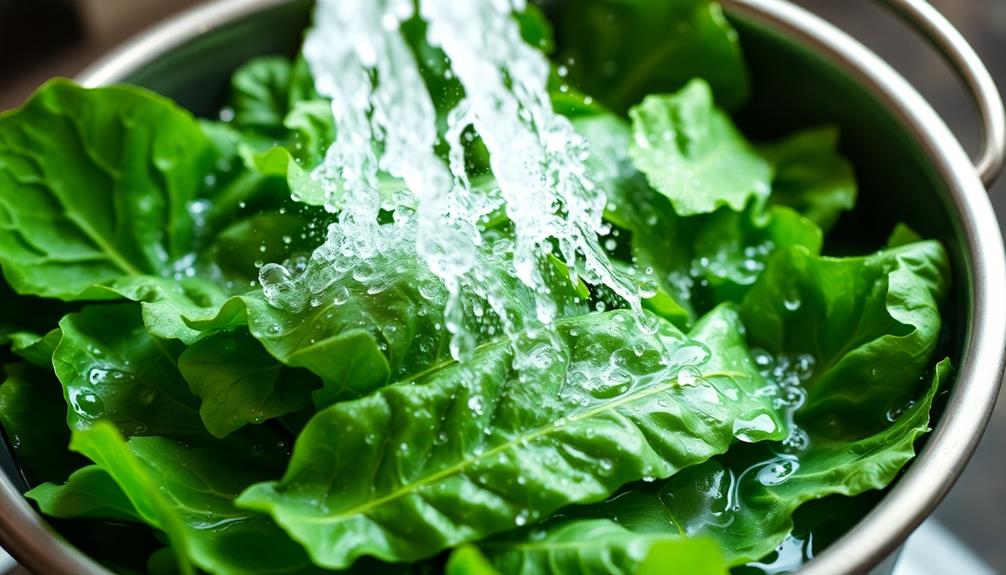
Rinse the collard greens thoroughly under running water to wash away any dirt or debris. Use your hands to gently rub the leaves, ensuring you remove all traces of grime. Pay close attention to the stems and undersides of the leaves, as that's where dirt tends to accumulate.
Once the greens are visibly clean, give them a final rinse to double-check. Swish them around in the water, allowing any remaining particles to float away. Shake off excess moisture, but don't worry about drying them completely – a little water won't affect the cooking process.
With the collard greens clean and ready, you can now move on to the next step in preparing this delicious dish.
Step 2. Chop Collard Greens Into Ribbons
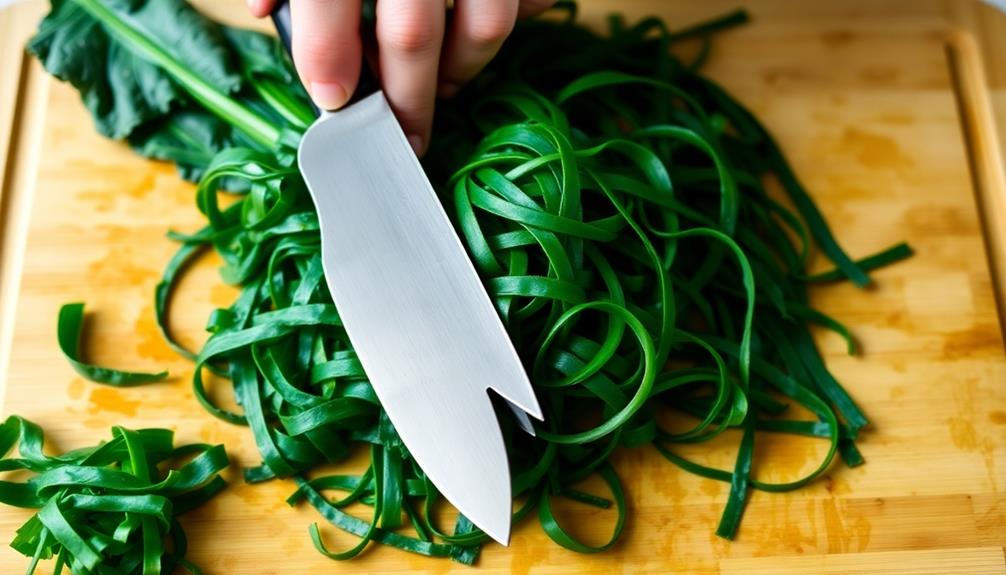
Take the cleaned collard greens and neatly stack the leaves on top of one another. Using a sharp knife, carefully slice through the stack, creating thin ribbons. Aim for pieces about 1/2 inch wide. This will allow the collards to cook evenly and have a nice texture.
Gather the ribbons and give them a final rinse under cool running water. This will wash away any last bits of dirt or debris. Spread the damp ribbons on a clean kitchen towel or paper towels to pat them dry.
The collards are now ready to be seasoned and sautéed. This chopping method ensures the greens cook through without becoming tough or stringy. Neatly slicing the leaves into ribbons is an important step for achieving the perfect gomen (collard greens) dish.
With the hard work of washing and chopping complete, you can now focus on the flavorful seasonings and cooking techniques.
Step 3. Add Seasonings
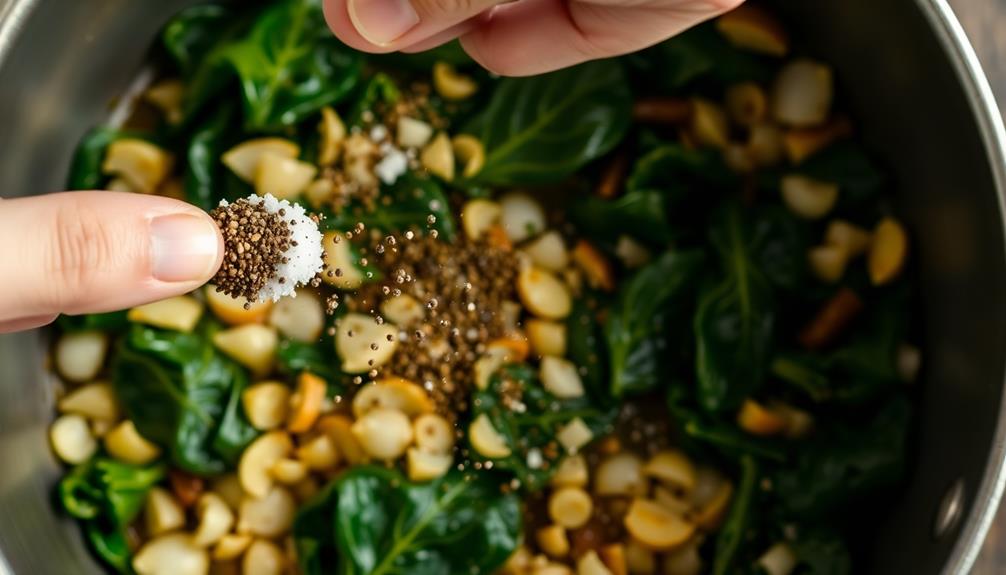
With the collard greens prepped, you can now focus on adding the right seasonings to create an authentic gomen dish. To elevate the flavors of the collard greens, you can add traditional Ethiopian spices such as berbere or mitmita. You can also include aromatic ingredients like onions, garlic, and ginger to enhance the overall taste of the dish. Experimenting with different variations of the collard greens recipe can help you find the perfect balance of flavors for your gomen.
Start by adding a teaspoon of ground cumin, which will lend an earthy depth of flavor. Next, sprinkle in a pinch of cayenne pepper to provide a subtle kick.
Don't forget to include a tablespoon of berbere spice mix, a signature Ethiopian blend that brings a complex, aromatic punch.
Now, for the real star of the show – the berbere! This spice mixture typically contains chili peppers, garlic, ginger, and a variety of warming spices like coriander, fenugreek, and cloves.
It's the key to unlocking the bold, fragrant character of gomen. Stir in a generous two tablespoons of the berbere, making sure it's evenly distributed throughout the greens.
Step 4. Simmer Collard Greens Until Tender
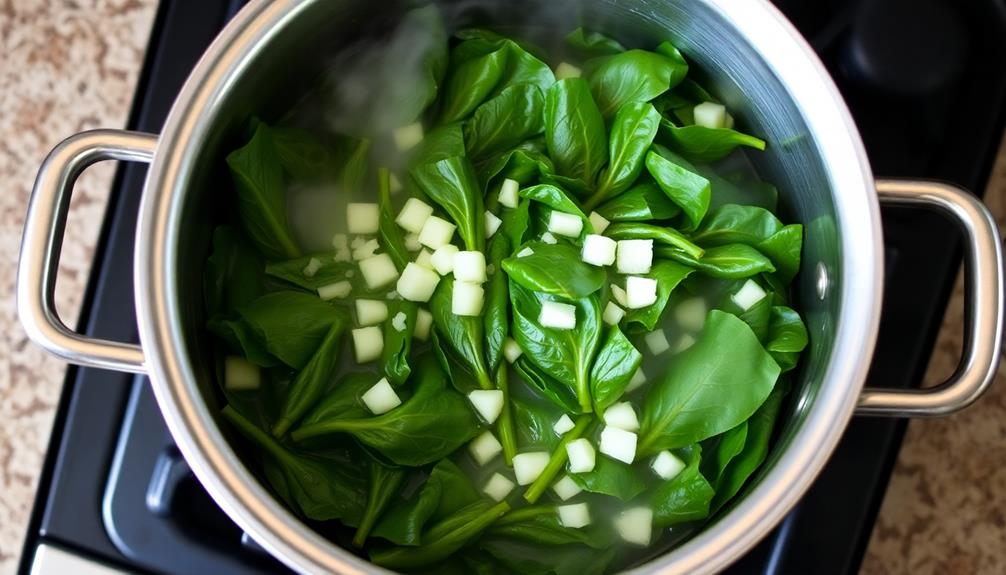
Now that you've added the aromatic spices, it's time to let the collard greens simmer until they're tender. Bring the pot to a gentle simmer over medium heat, then reduce the heat to low.
Let the greens cook, stirring occasionally, for about 45 minutes to an hour. You'll know they're ready when they're fork-tender and the leaves have a soft, velvety texture.
As the greens simmer, keep an eye on the liquid level. If it starts to get low, add a splash of water or broth to prevent the greens from drying out. You want them to stay submerged in the flavorful cooking liquid.
Taste the greens periodically and adjust the seasoning as needed, adding more salt, pepper, or a sprinkle of the spice blend you used earlier. The collard greens should be infused with all those delicious flavors by the time they're perfectly tender.
Step 5. Plate and Serve Hot
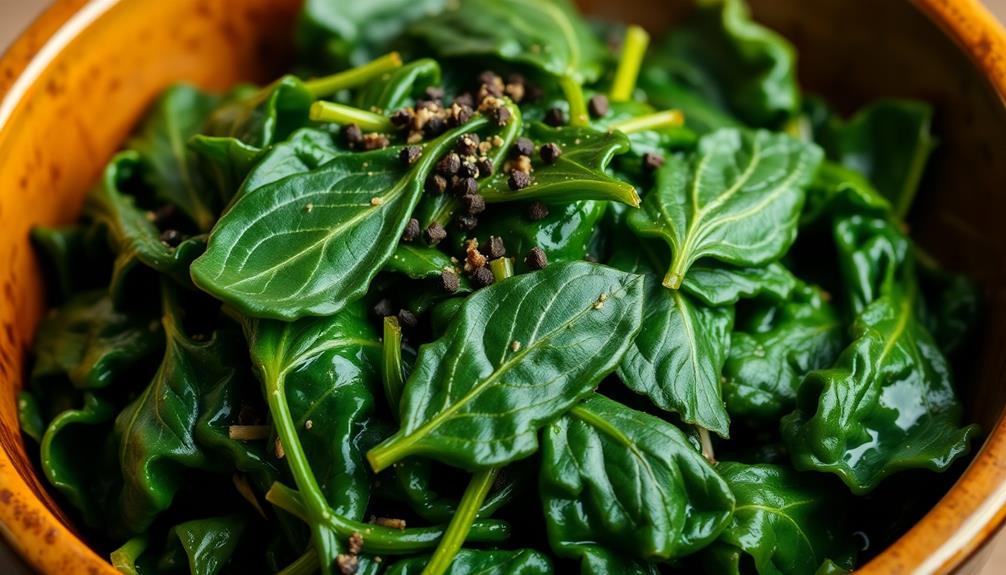
Once the collard greens have simmered until tender, it's time to plate and serve them hot.
Using a slotted spoon, transfer the greens from the pot to a serving dish. Make sure to allow any excess liquid to drain off before plating.
Arrange the greens attractively on the dish, creating a colorful and appetizing presentation.
If desired, you can garnish the greens with a sprinkle of apple cider vinegar or a drizzle of olive oil for added flavor.
Serve the hot collard greens immediately, while they're still piping hot.
They pair wonderfully with a variety of main dishes, from roasted meats to hearty stews.
The tender, flavorful greens are sure to be a hit with your family and guests.
Final Thoughts
Gomen, or collard greens, is a versatile and nutritious green that deserves a place in every home cook's repertoire. You can savor the robust, earthy flavors of this beloved vegetable all year round, making it a staple in many culinary traditions.
When it comes to final thoughts, remember that gomen is a forgiving dish. If you prefer a softer texture, simply cook the greens a little longer. Conversely, for a more toothsome bite, adjust the cooking time accordingly. The key is to find the perfect balance that suits your personal taste preferences.
As you continue your culinary journey, don't be afraid to experiment with different seasonings and cooking methods. Gomen pairs beautifully with a variety of proteins, grains, and other complementary ingredients.
Embrace the versatility of this nutritional powerhouse and make it a regular part of your meal planning.
Frequently Asked Questions
Where Can I Find Fresh Collard Greens?
You can find fresh collard greens at your local grocery store, farmer's market, or specialty produce shop. Many supermarkets carry a variety of leafy greens, including collard greens, throughout the year.
How Can I Store Collard Greens Properly?
To store collard greens properly, start by rinsing them and patting them dry. Wrap them in a damp paper towel, place in a resealable bag, and refrigerate for up to 5 days. Avoid letting them sit in water.
What Are the Health Benefits of Collard Greens?
Collard greens are packed with essential vitamins and minerals, like vitamins A, C, and K. They're also rich in fiber, which can aid digestion and promote heart health. Plus, they're low in calories, making them a great addition to any healthy diet.
Can I Substitute Other Greens for Collard Greens?
You can certainly substitute other greens for collard greens. Kale, Swiss chard, and spinach are all great alternatives that offer similar nutritional benefits. However, each green has its own unique flavor profile, so you may need to adjust your recipe accordingly.
How Do I Remove the Bitterness From Collard Greens?
To remove bitterness from collard greens, try blanching them in boiling water for a few minutes, then sautéing with onions, garlic, and a splash of vinegar or lemon juice. This can help mellow the strong flavor.
